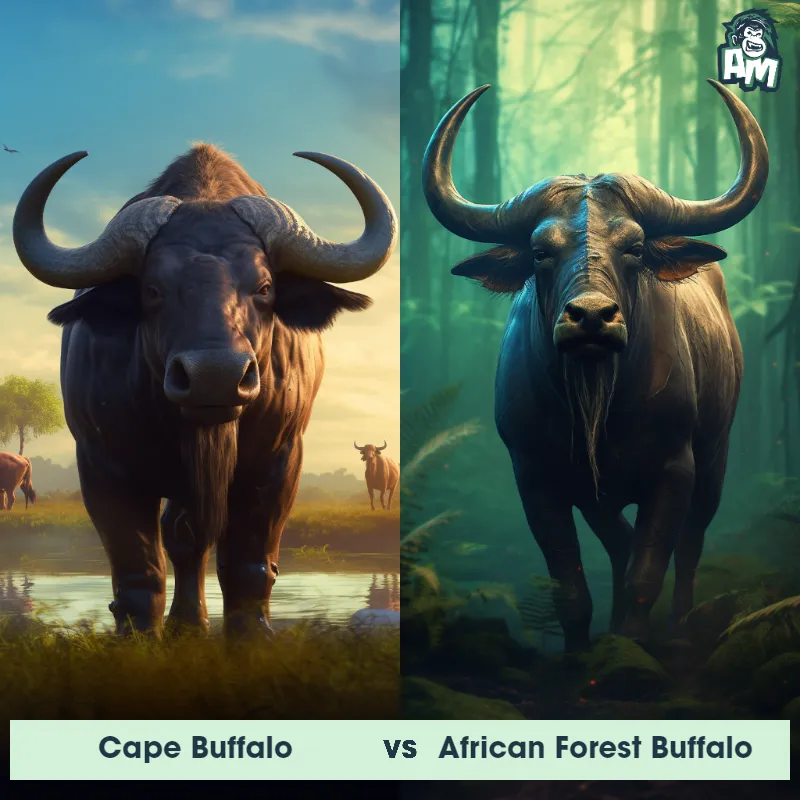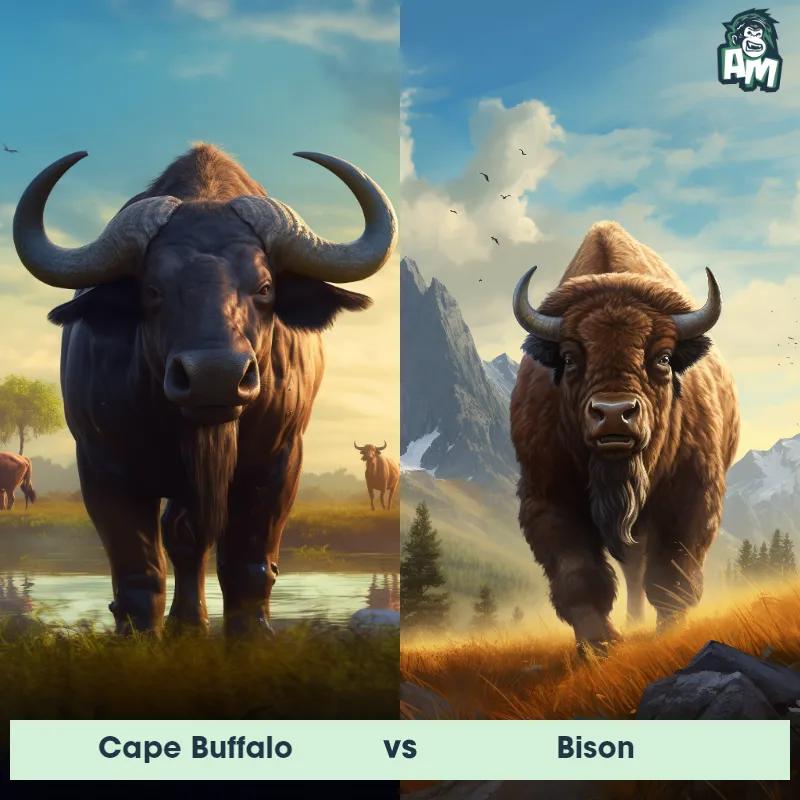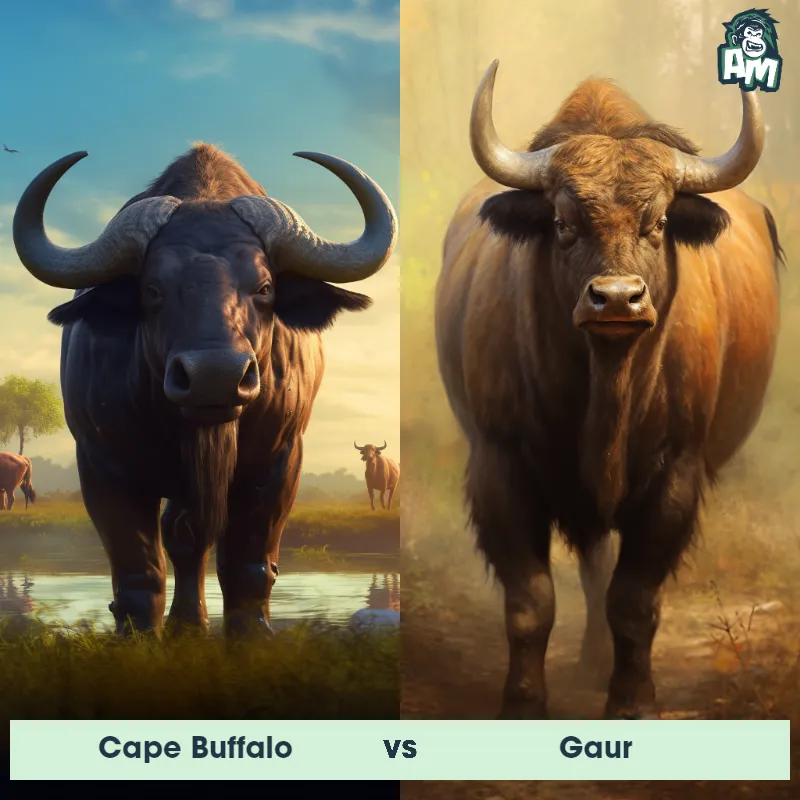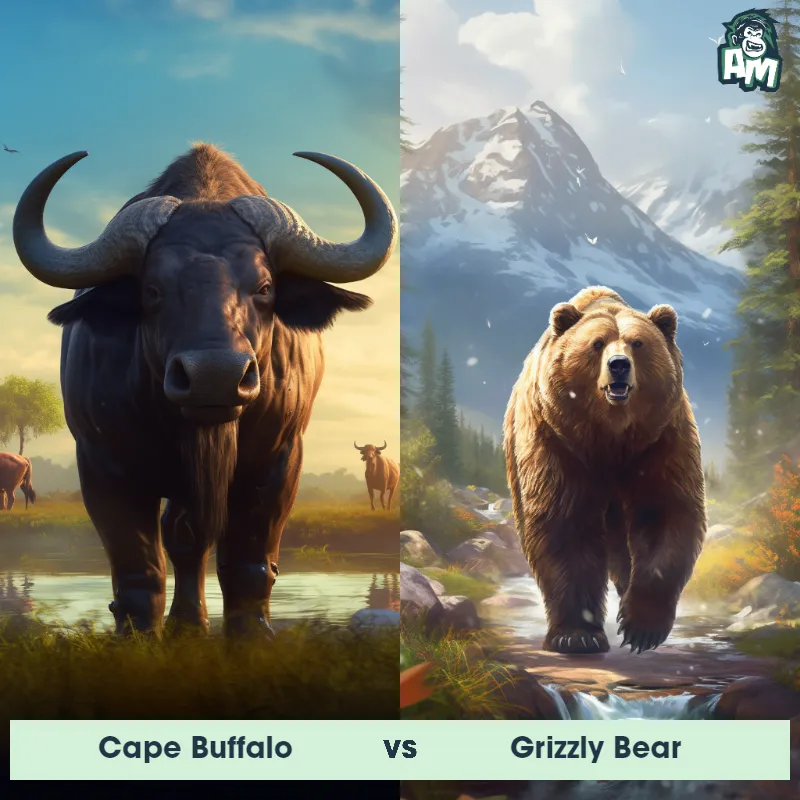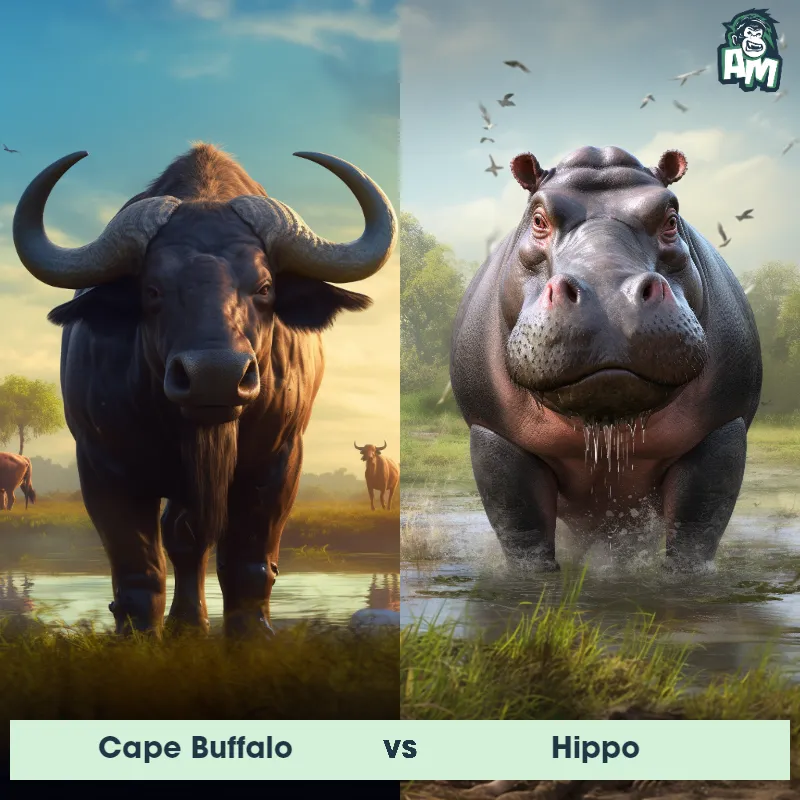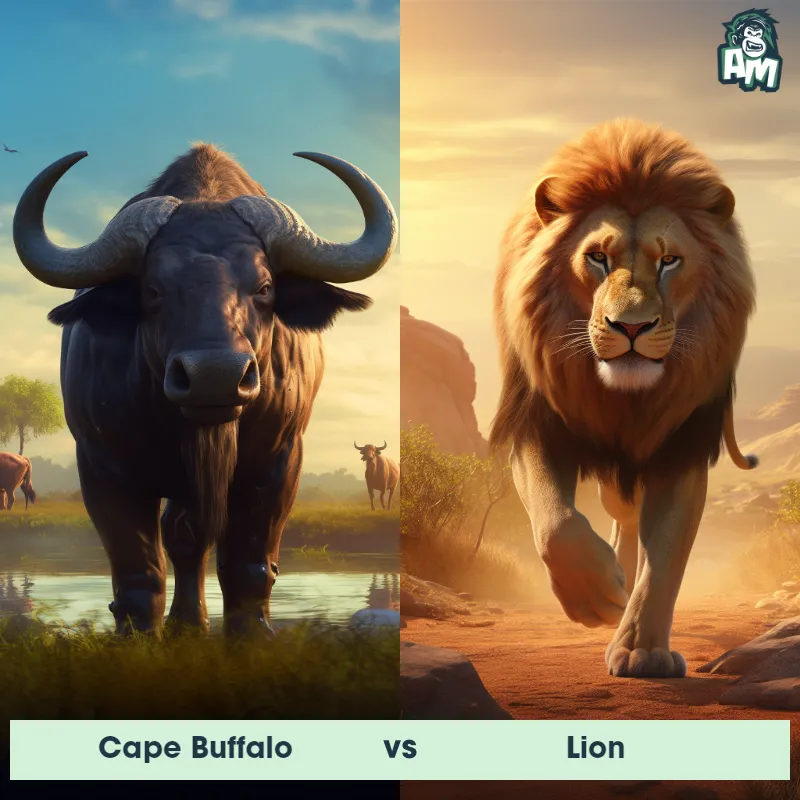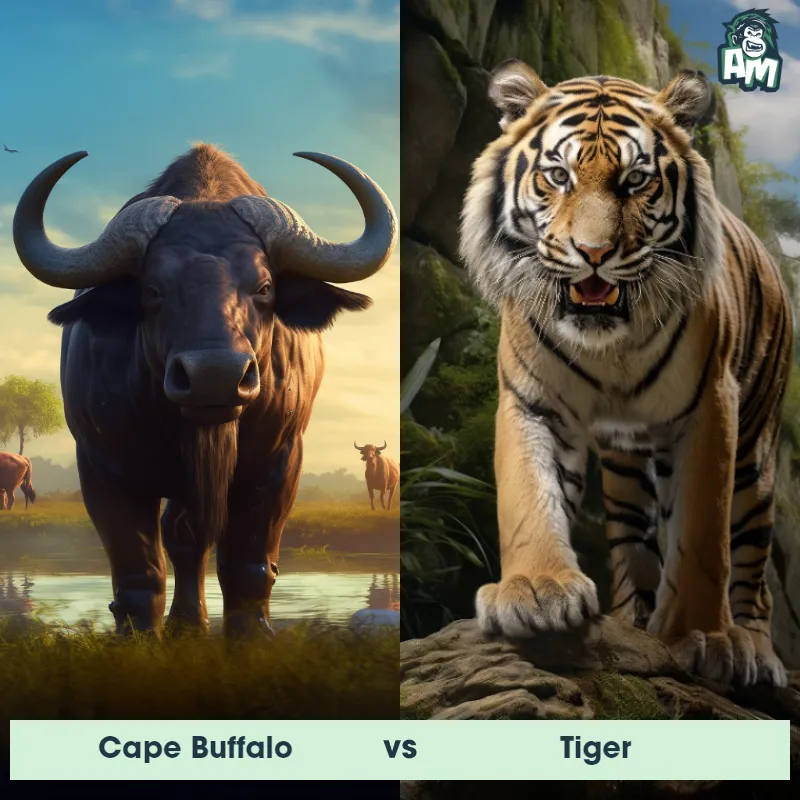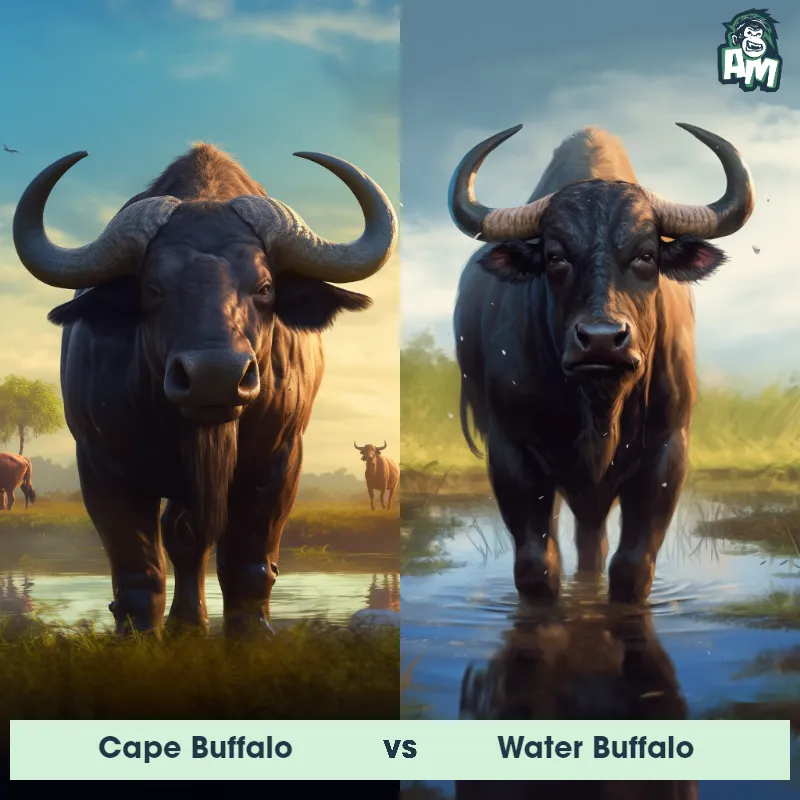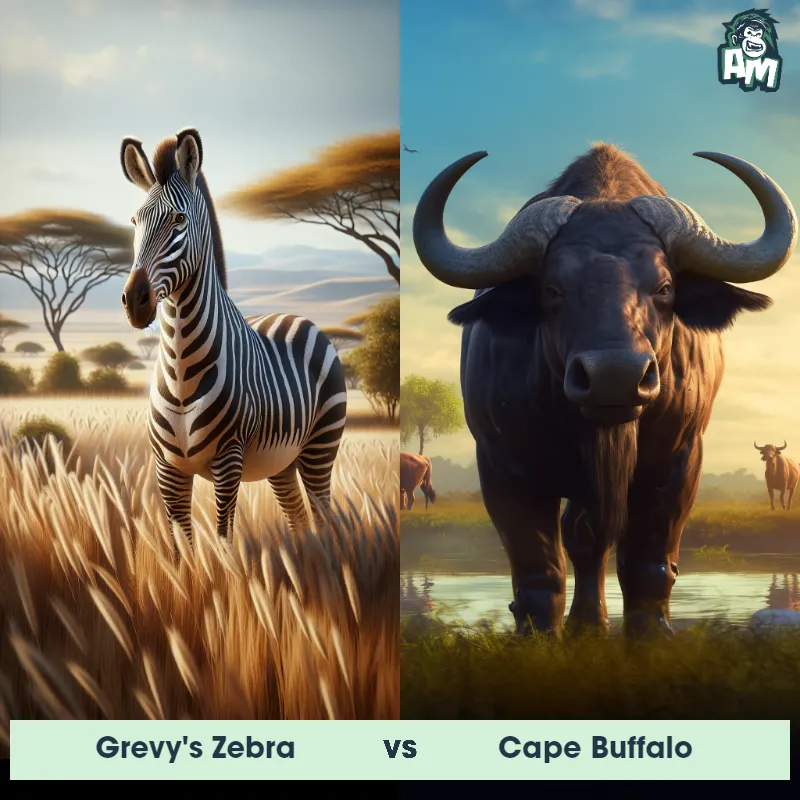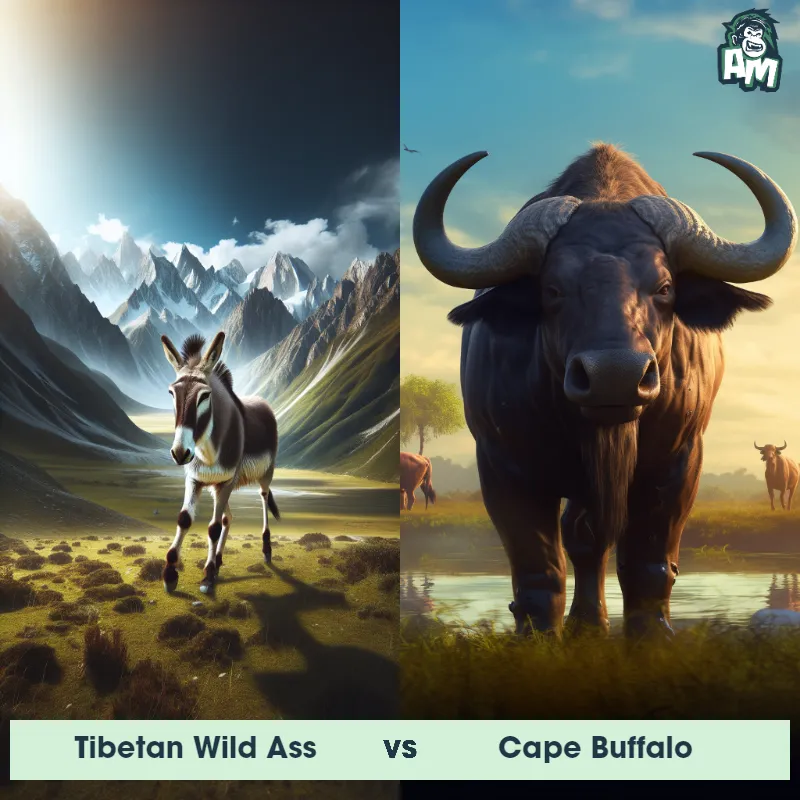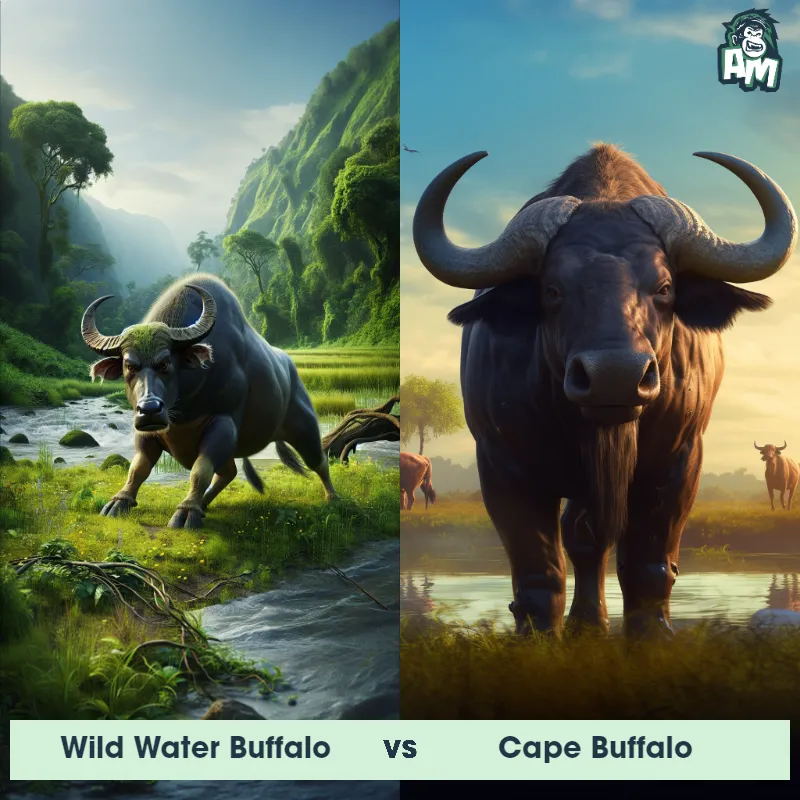The Cape Buffalo
The Cape Buffalo, also known as African Buffalo, is a large bovine species found in Sub-Saharan Africa. They are known for their robust stature, with males weighing up to 1,500 kilograms and standing around 1.7 meters tall at the shoulder. Sporting a dark brown or black coat, the Cape Buffalo has a distinctive set of large, curved horns that can measure up to 1.2 meters in length. They are highly social animals, forming herds of up to a few thousand individuals, and are often considered one of the most dangerous species in Africa due to their unpredictable nature and charging behavior when threatened.
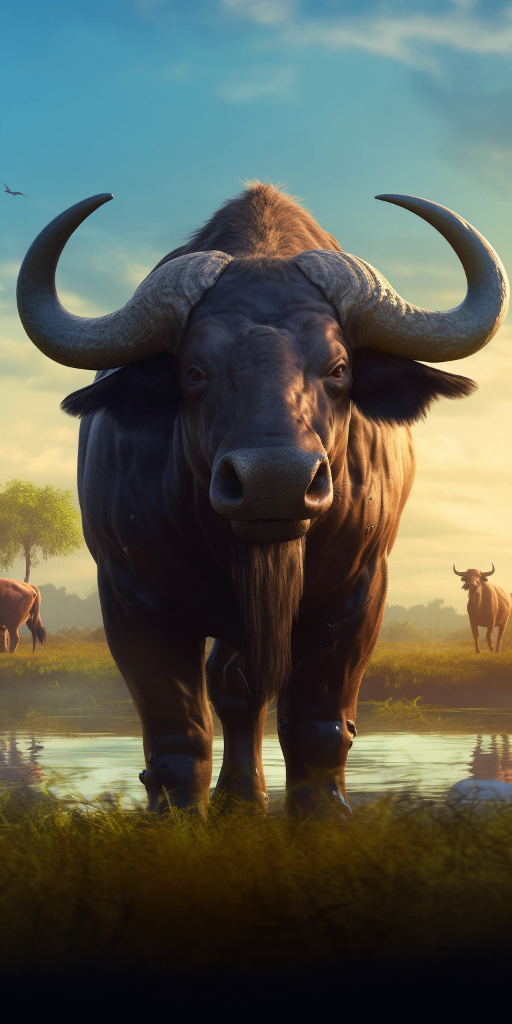
| Cape Buffalo | |
|---|---|
| Size | Height at shoulder: 1.0-1.7 meters (3.3-5.6 feet); Length: 1.7-3.4 meters (5.6-11.2 feet) |
| Weight | 500-1,000 kg (1,100-2,200 lbs) |
| Speed | Speed: 35 mph (56 km/hr) |
| Key Strength | Powerful charge and sharp horns |
| Biggest Weakness | Poor eyesight and slow movement |
| Scientific Name | Syncerus caffer |
| Family | Bovidae |
| Habitat | Grasslands, savannas, and forests |
| Geography | Sub-Saharan Africa |
| Diet | Herbivorous, feeding on grasses, leaves, and other vegetation |
| Lifespan | 15 years - 25 years |

The Cape Buffalo
The Cape Buffalo, also known as African Buffalo, is a large bovine species found in Sub-Saharan Africa. They are known for their robust stature, with males weighing up to 1,500 kilograms and standing around 1.7 meters tall at the shoulder. Sporting a dark brown or black coat, the Cape Buffalo has a distinctive set of large, curved horns that can measure up to 1.2 meters in length. They are highly social animals, forming herds of up to a few thousand individuals, and are often considered one of the most dangerous species in Africa due to their unpredictable nature and charging behavior when threatened.
Fun Fact: Cape Buffalo are known for their strong sense of camaraderie and will come to the defense of injured or weak members in their herd, often forming a protective circle around them when attacked by predators.
| Cape Buffalo | |
|---|---|
| Size | Height at shoulder: 1.0-1.7 meters (3.3-5.6 feet); Length: 1.7-3.4 meters (5.6-11.2 feet) |
| Weight | 500-1,000 kg (1,100-2,200 lbs) |
| Speed | Speed: 35 mph (56 km/hr) |
| Key Strength | Powerful charge and sharp horns |
| Biggest Weakness | Poor eyesight and slow movement |
| Scientific Name | Syncerus caffer |
| Family | Bovidae |
| Habitat | Grasslands, savannas, and forests |
| Geography | Sub-Saharan Africa |
| Diet | Herbivorous, feeding on grasses, leaves, and other vegetation |
| Lifespan | 15 years - 25 years |
Cape Buffalo Matchups
We use AI to simulate matchups between the Cape Buffalo and other animals. Our simulation considers size, strength, and natural predatory behaviors to determine the most likely outcome.

Can't find the Matchup you want?
Create Your Own MatchupCape Buffalo: Diet, Predators, Aggression, and Defensive Behaviors
What do Cape Buffaloes eat?
Cape Buffaloes are herbivores and mainly graze on grass, plants, and occasionally shrubs. They are known to be selective feeders, choosing only the most nutritious vegetation available to them. During the dry season when food is scarce, they will also feed on dry grass and leaves.
Do Cape Buffaloes have any predators?
Cape Buffaloes are preyed upon by lions, particularly large prides that work together to bring down these massive animals. Other predators include crocodiles, hyenas, and occasionally leopards. However, Cape Buffaloes are known for their collective defense strategy, which makes them a challenging prey for predators.
Are Cape Buffaloes aggressive?
Cape Buffaloes are known to be one of the most dangerous animals in Africa due to their unpredictable nature and aggressive tendencies. They are notorious for charging at intruders, including humans, especially when they feel threatened or provoked. They have been responsible for numerous fatalities among hunters and wildlife enthusiasts.
Do Cape Buffaloes fight among themselves?
Cape Buffaloes are known to engage in fierce battles among themselves, particularly during mating season when males compete for dominance and access to females. These fights can be brutal and often result in injuries or even death. Dominant males establish a hierarchy within the herd through these fights.
How do Cape Buffaloes defend themselves?
Cape Buffaloes have a unique defense mechanism known as "mobbing behavior." When threatened by predators, they form a circle with the calves in the center and face outward, presenting a united front against their attackers. This behavior confuses predators and makes it difficult for them to isolate and target an individual buffalo.
What is the biggest weakness of Cape Buffaloes in a fight?
Despite their formidable size and strength, Cape Buffaloes have a vulnerability in their hindquarters. Predators such as lions often target this area, aiming to weaken the buffalo's ability to defend itself. This strategic advantage allows predators to bring down Cape Buffaloes more effectively during an attack.
Fun Fact: Despite their seemingly intimidating appearance, Cape Buffalo are known to be excellent swimmers and have been observed crossing rivers and lakes, sometimes even submerging completely underwater, in order to reach better grazing areas or escape predators.
Fun Fact: The Cape Buffalo’s horns are not only used for defense and establishing dominance within their herd but also for rubbing and scraping against trees, resulting in their characteristic worn and polished appearance along their ridge.



